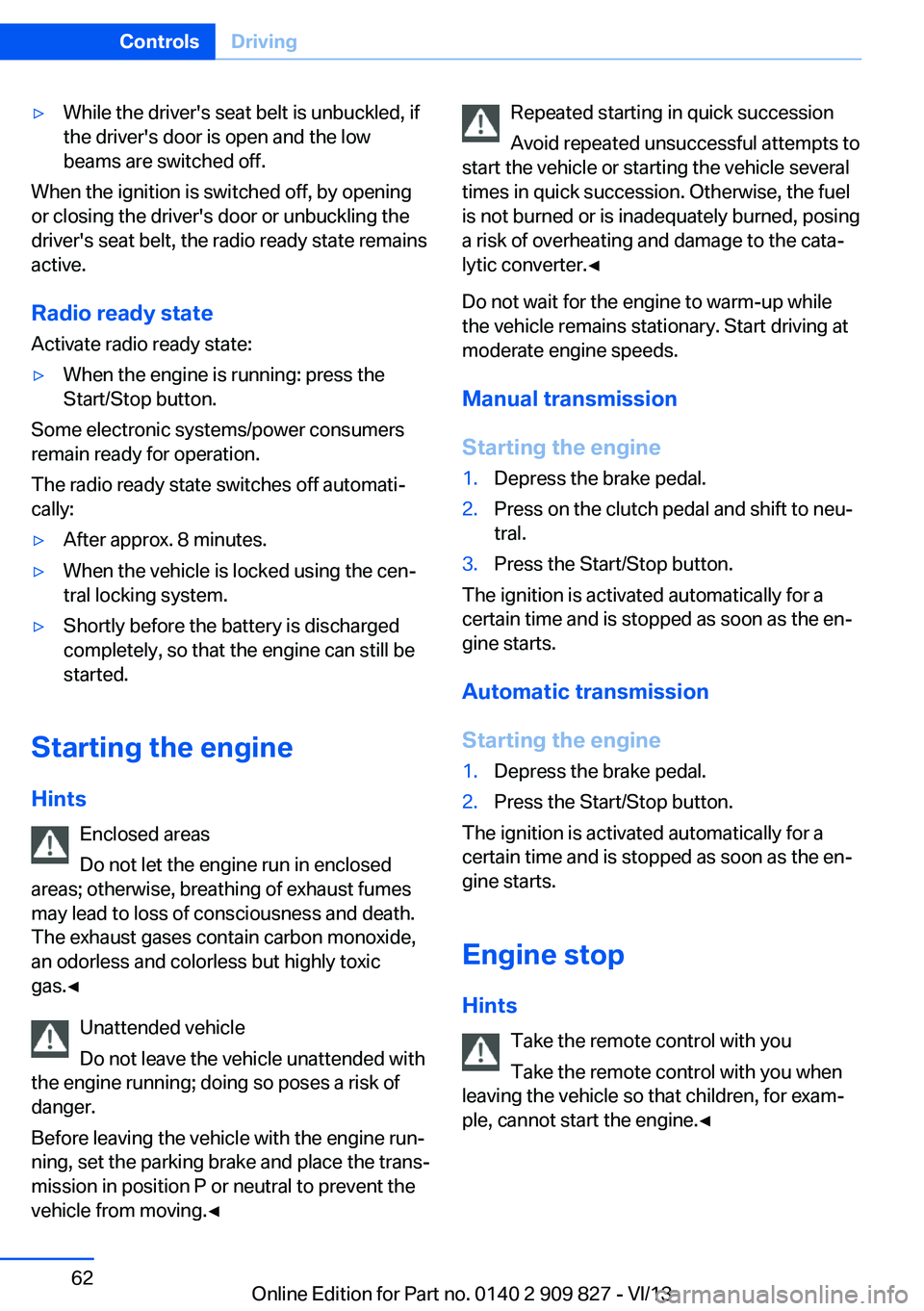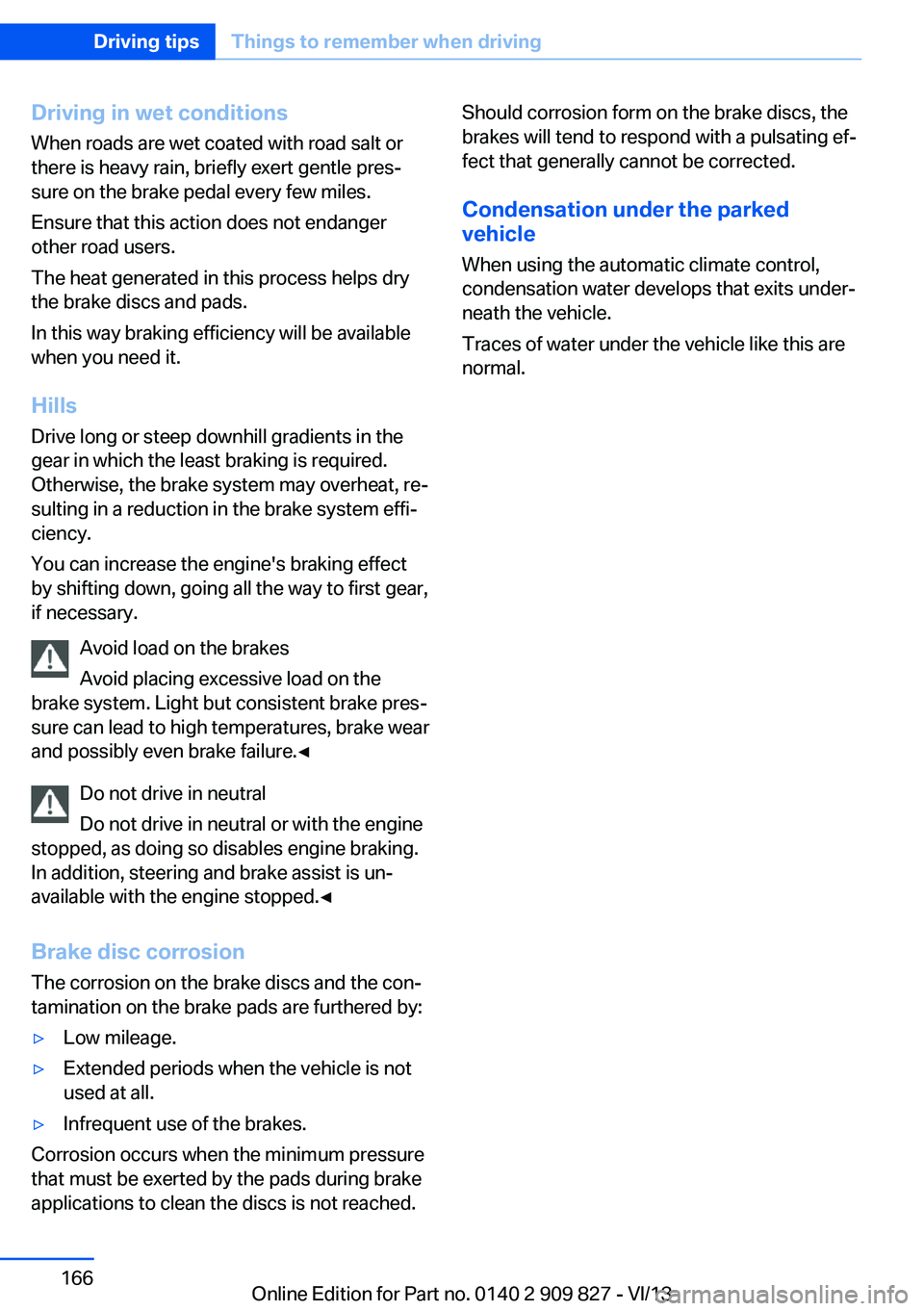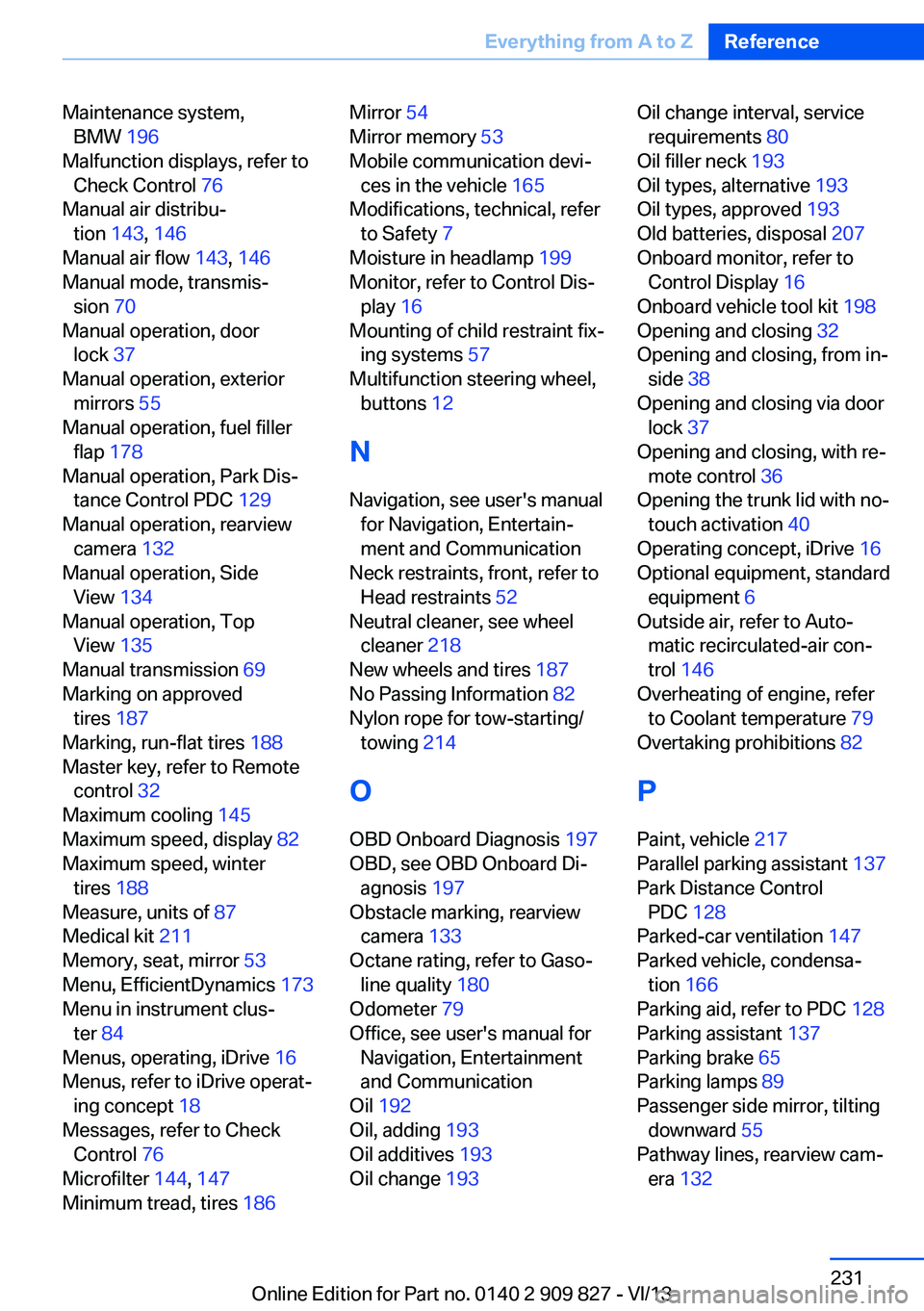2014 BMW 428I COUPE engine overheat
[x] Cancel search: engine overheatPage 62 of 236

▷While the driver's seat belt is unbuckled, if
the driver's door is open and the low
beams are switched off.
When the ignition is switched off, by opening
or closing the driver's door or unbuckling the
driver's seat belt, the radio ready state remains
active.
Radio ready state
Activate radio ready state:
▷When the engine is running: press the
Start/Stop button.
Some electronic systems/power consumers
remain ready for operation.
The radio ready state switches off automati‐
cally:
▷After approx. 8 minutes.▷When the vehicle is locked using the cen‐
tral locking system.▷Shortly before the battery is discharged
completely, so that the engine can still be
started.
Starting the engine
Hints Enclosed areas
Do not let the engine run in enclosed
areas; otherwise, breathing of exhaust fumes may lead to loss of consciousness and death.
The exhaust gases contain carbon monoxide,
an odorless and colorless but highly toxic
gas.◀
Unattended vehicle
Do not leave the vehicle unattended with
the engine running; doing so poses a risk of
danger.
Before leaving the vehicle with the engine run‐
ning, set the parking brake and place the trans‐
mission in position P or neutral to prevent the
vehicle from moving.◀
Repeated starting in quick succession
Avoid repeated unsuccessful attempts to
start the vehicle or starting the vehicle several
times in quick succession. Otherwise, the fuel
is not burned or is inadequately burned, posing
a risk of overheating and damage to the cata‐
lytic converter.◀
Do not wait for the engine to warm-up while
the vehicle remains stationary. Start driving at
moderate engine speeds.
Manual transmission
Starting the engine1.Depress the brake pedal.2.Press on the clutch pedal and shift to neu‐
tral.3.Press the Start/Stop button.
The ignition is activated automatically for a
certain time and is stopped as soon as the en‐
gine starts.
Automatic transmission
Starting the engine
1.Depress the brake pedal.2.Press the Start/Stop button.
The ignition is activated automatically for a
certain time and is stopped as soon as the en‐
gine starts.
Engine stop
Hints Take the remote control with you
Take the remote control with you when
leaving the vehicle so that children, for exam‐
ple, cannot start the engine.◀
Seite 62ControlsDriving62
Online Edition for Part no. 0140 2 909 827 - VI/13
Page 166 of 236

Driving in wet conditionsWhen roads are wet coated with road salt or
there is heavy rain, briefly exert gentle pres‐
sure on the brake pedal every few miles.
Ensure that this action does not endanger
other road users.
The heat generated in this process helps dry
the brake discs and pads.
In this way braking efficiency will be available
when you need it.
Hills
Drive long or steep downhill gradients in the
gear in which the least braking is required.
Otherwise, the brake system may overheat, re‐
sulting in a reduction in the brake system effi‐
ciency.
You can increase the engine's braking effect
by shifting down, going all the way to first gear,
if necessary.
Avoid load on the brakes
Avoid placing excessive load on the
brake system. Light but consistent brake pres‐
sure can lead to high temperatures, brake wear
and possibly even brake failure.◀
Do not drive in neutral
Do not drive in neutral or with the engine
stopped, as doing so disables engine braking.
In addition, steering and brake assist is un‐
available with the engine stopped.◀
Brake disc corrosion
The corrosion on the brake discs and the con‐
tamination on the brake pads are furthered by:▷Low mileage.▷Extended periods when the vehicle is not
used at all.▷Infrequent use of the brakes.
Corrosion occurs when the minimum pressure
that must be exerted by the pads during brake
applications to clean the discs is not reached.
Should corrosion form on the brake discs, the
brakes will tend to respond with a pulsating ef‐
fect that generally cannot be corrected.
Condensation under the parkedvehicle
When using the automatic climate control,
condensation water develops that exits under‐
neath the vehicle.
Traces of water under the vehicle like this are
normal.Seite 166Driving tipsThings to remember when driving166
Online Edition for Part no. 0140 2 909 827 - VI/13
Page 231 of 236

Maintenance system,BMW 196
Malfunction displays, refer to Check Control 76
Manual air distribu‐ tion 143, 146
Manual air flow 143, 146
Manual mode, transmis‐ sion 70
Manual operation, door lock 37
Manual operation, exterior mirrors 55
Manual operation, fuel filler flap 178
Manual operation, Park Dis‐ tance Control PDC 129
Manual operation, rearview camera 132
Manual operation, Side View 134
Manual operation, Top View 135
Manual transmission 69
Marking on approved tires 187
Marking, run-flat tires 188
Master key, refer to Remote control 32
Maximum cooling 145
Maximum speed, display 82
Maximum speed, winter tires 188
Measure, units of 87
Medical kit 211
Memory, seat, mirror 53
Menu, EfficientDynamics 173
Menu in instrument clus‐ ter 84
Menus, operating, iDrive 16
Menus, refer to iDrive operat‐ ing concept 18
Messages, refer to Check Control 76
Microfilter 144, 147
Minimum tread, tires 186 Mirror 54
Mirror memory 53
Mobile communication devi‐ ces in the vehicle 165
Modifications, technical, refer to Safety 7
Moisture in headlamp 199
Monitor, refer to Control Dis‐ play 16
Mounting of child restraint fix‐ ing systems 57
Multifunction steering wheel, buttons 12
N Navigation, see user's manual for Navigation, Entertain‐
ment and Communication
Neck restraints, front, refer to Head restraints 52
Neutral cleaner, see wheel cleaner 218
New wheels and tires 187
No Passing Information 82
Nylon rope for tow-starting/ towing 214
O OBD Onboard Diagnosis 197
OBD, see OBD Onboard Di‐ agnosis 197
Obstacle marking, rearview camera 133
Octane rating, refer to Gaso‐ line quality 180
Odometer 79
Office, see user's manual for Navigation, Entertainment
and Communication
Oil 192
Oil, adding 193
Oil additives 193
Oil change 193 Oil change interval, service
requirements 80
Oil filler neck 193
Oil types, alternative 193
Oil types, approved 193
Old batteries, disposal 207
Onboard monitor, refer to Control Display 16
Onboard vehicle tool kit 198
Opening and closing 32
Opening and closing, from in‐ side 38
Opening and closing via door lock 37
Opening and closing, with re‐ mote control 36
Opening the trunk lid with no- touch activation 40
Operating concept, iDrive 16
Optional equipment, standard equipment 6
Outside air, refer to Auto‐ matic recirculated-air con‐
trol 146
Overheating of engine, refer to Coolant temperature 79
Overtaking prohibitions 82
P Paint, vehicle 217
Parallel parking assistant 137
Park Distance Control PDC 128
Parked-car ventilation 147
Parked vehicle, condensa‐ tion 166
Parking aid, refer to PDC 128
Parking assistant 137
Parking brake 65
Parking lamps 89
Passenger side mirror, tilting downward 55
Pathway lines, rearview cam‐ era 132 Seite 231Everything from A to ZReference231
Online Edition for Part no. 0140 2 909 827 - VI/13